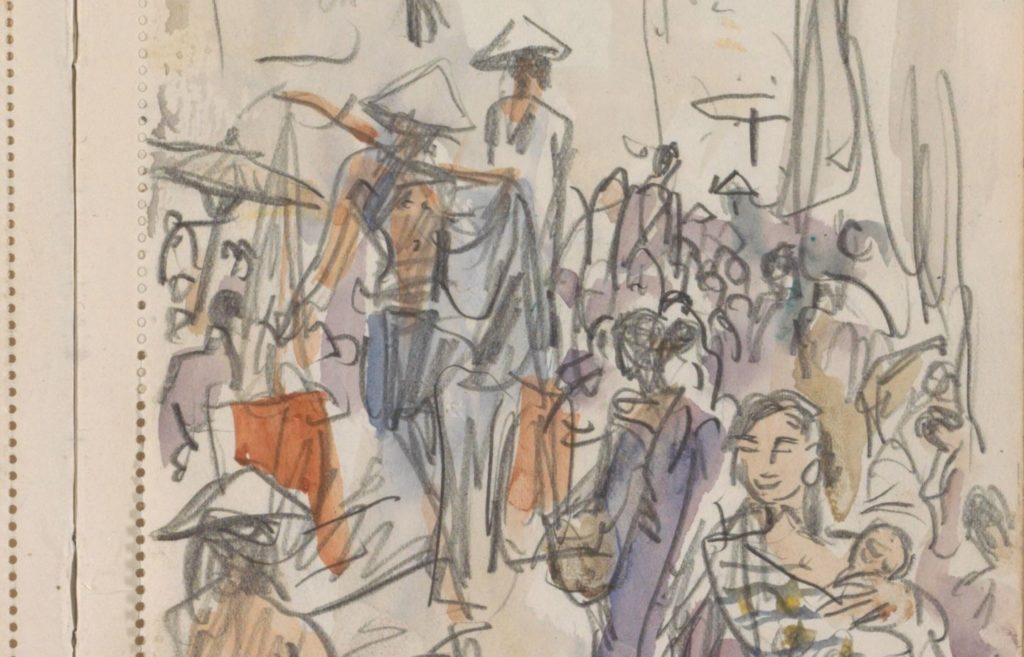
At last week’s fantastic AIFIS-MSU Conference on Indonesian Studies, I was delighted to join and moderate a panel on “Diversity, Equity, and Inclusion in Indonesian Studies,” alongside colleagues from around Indonesia and the US. (Sadly, we also recruited to awesome graduate students from the US and Indonesia to participate in the conversation, but neither of them was able to log in on that day to provide their planned contributions.)
I thought it would be worthwhile to reflect on the reasoning behind the panel and on the discussion, given that the concept of Diversity, Equity, and Inclusion or “DEI” (especially in the context of higher education) have become such lightning rods.
In researching Indonesia, there is an obvious long-standing division between people from Indonesia researching about the country, its people, its environment, etc. and people from outside Indonesia researching those same topics. In fact, this was a key theme in Don Emmerson’s keynote lecture at the first AIFIS-MSU conference two years ago, where he painted those two categories as a dyad. I had a strong reaction of discomfort then (actually posed during the Q&A) about flattening out all Indonesians and all non-Indonesians into just two categories, as though I had the same access as a female researcher from a post-colonial country outside Indonesia, or as though an ethnically Javanese Muslim professor from a university in Jakarta had the same positionality as a Papuan Christian researcher—just to paint the most obvious contrasts. Last week’s panel gave space to think about how different types of backgrounds impact the way that researchers and teachers about Indonesia approach the field and their work, and how we can all do better.
Another motivation for the panel, specifically at an event sponsored by the American Institute for Indonesian Studies, was to provide space to make sure that a wide range of voices have access to the support they need from AIFIS to further Indonesian Studies. Growing out of a conversation at the AIFIS annual meeting during the Association for Asian Studies in March 2023, my colleague Jenny Zhang and I wanted to have a public forum to think about the different ways that diversity is understood between Indonesia and the US, and how we can make space for those different understandings as AIFIS crafts institutional calls for grants, special workshops, and other programs.
Those diverging understandings of what types of identities are implicit when thinking about “diversity” between the US and Indonesia was one very productive area of discussion among the panelists last week. Some of the categories that are frequently subject to evaluation in the US (like race and sexual orientation) are either not as relevant or unspeakable in the Indonesian context. On the other hand, some categories that are critically important in Indonesia (like ethnic and religious background and religious versus non-religious institutional affiliation) are very much excluded from the American conversation about diversity. In other areas, both sides are thinking about similar issues but approaching them differently—like ensuring that women get a fair crack at academic positions and career advancement, and that women are not targets of sexual predation within academic and research contexts.
The colleagues in the conversation were absolutely fantastic, bringing different perspectives and experiences to think about how we could build more inclusive spaces for Indonesian studies:
- Astrid Lim (AMINEF, grant administrator)
- Dzuriyatun Toyibah (UIN-Syarif Hidayatullah, Sociology)
- Izak Lattu (UKSW, Theology)
- Jenny Zhang (Spencer Foundation, researcher and program officer)
- Zainal Abidin Bagir (UGM, Cross-Religious and Cross-Cultural Studies)
(We also invited Ni Luh Gede Sri Pratiwi [UW-Madison, History] and Nurhady Sirimorok [Universitas Hasanuddin, Environmental Studies] to join, but they had connectivity issues.)
Some other key topics that came up include institutional mechanisms for recruiting full participation from Eastern Indonesians, building diverse research teams when engaging in collaborative work, making research results accessible to the populations they study, how positionality limits the ways certain fields (like religious studies) are approached in Indonesia, how American diversity is perceived in Indonesia and vice versa, and what inhibits certain communities from career advancement in the field. For those who registered for the conference, a recording of the session is available via the conference platform Whova.
We also had great questions from attendees, ranging from how anti-black racism affects Papuans to differential policies between universities under the Ministry of Education and Culture versus the Ministry of Religion. My favorite suggestion from the audience was to create a guideline of some best practices that AIFIS could make available as a working document, which would hopefully increase understanding from both sides as they work to reflect the diversity of Indonesians and researchers on Indonesia, to build equitable conversations about the field, and to produce inclusive outputs accessible to a variety of audiences. This is a project I hope to get rolling over the coming year.
Image credit: Indonesiërs op een straat, by Marius Bauer, 1925 (in the public domain; available from the Rijksmuseum at http://hdl.handle.net/10934/RM0001.COLLECT.552273)